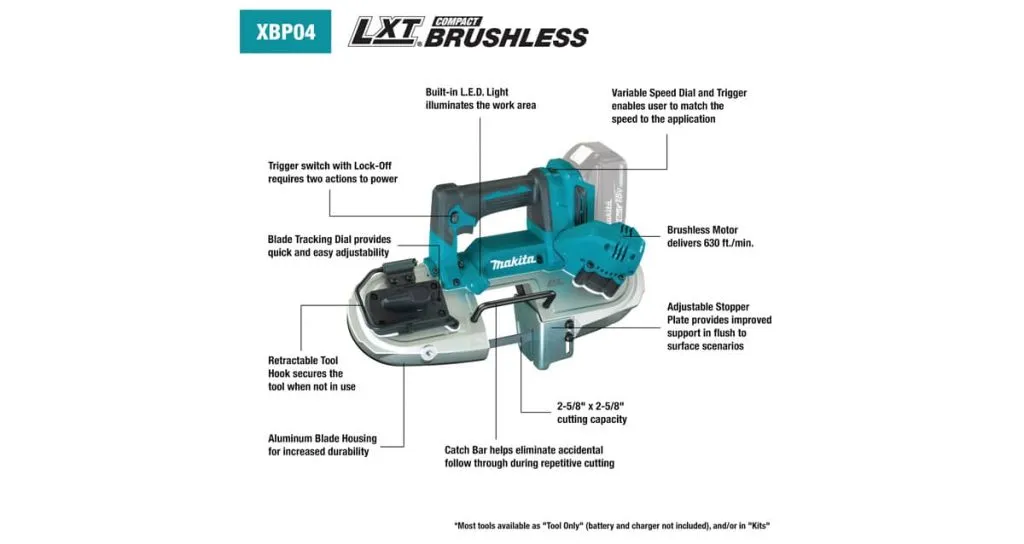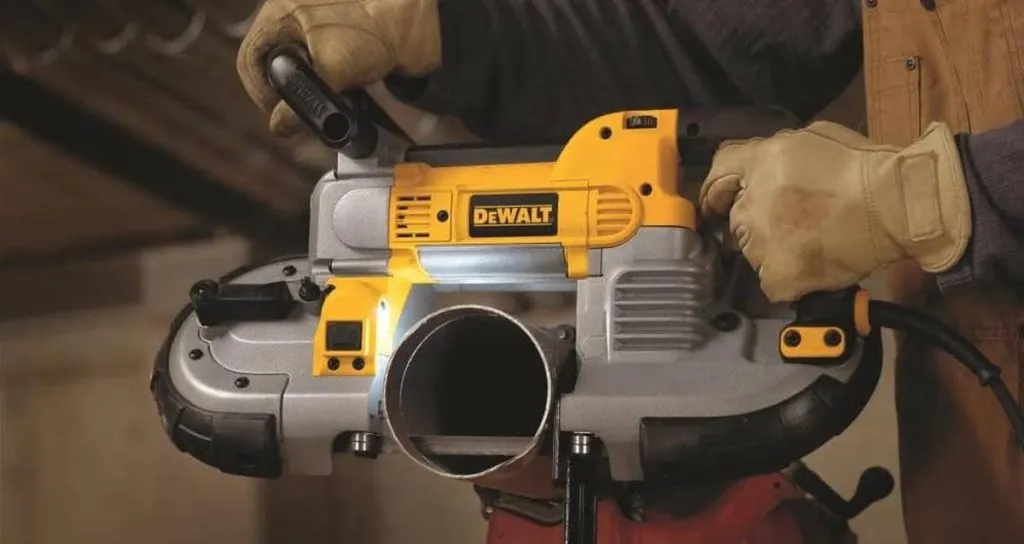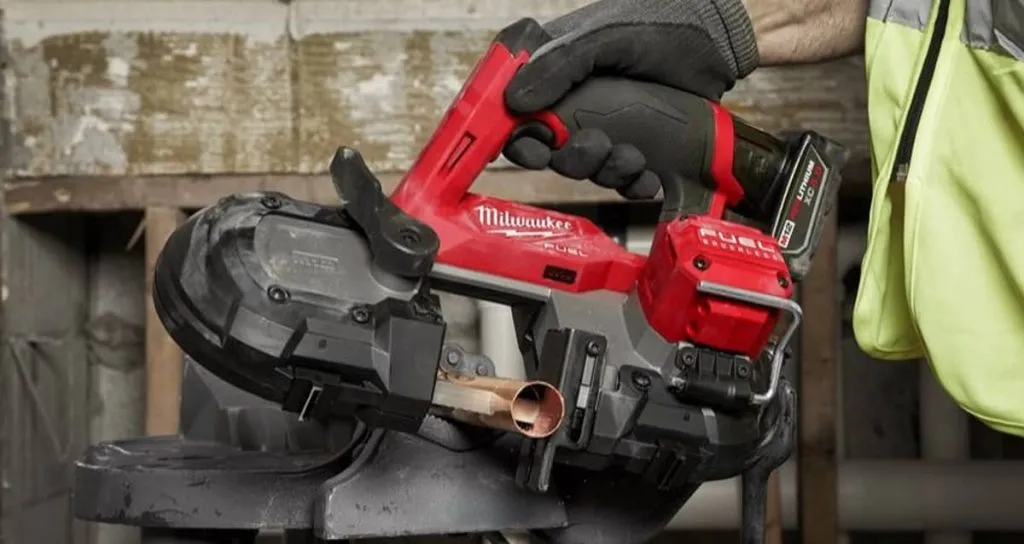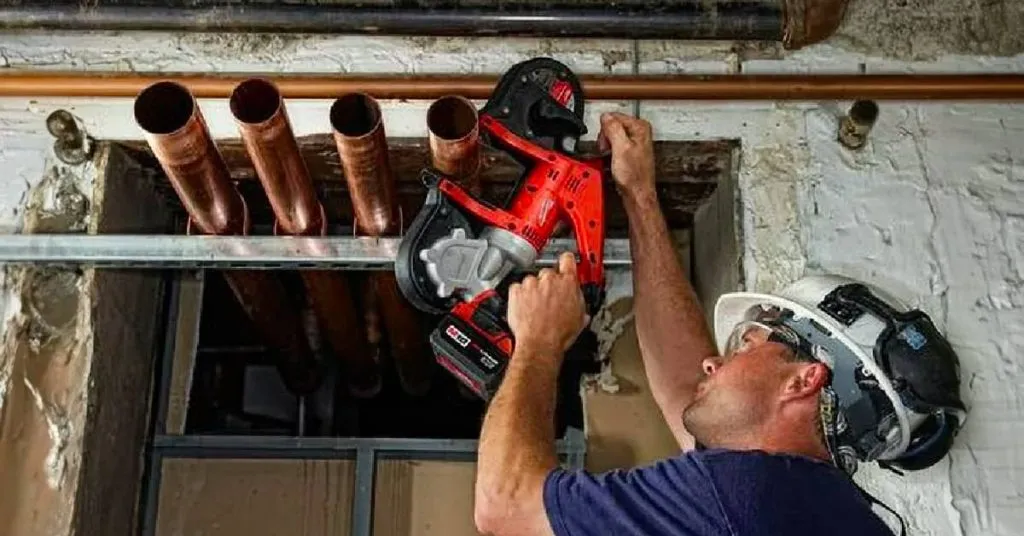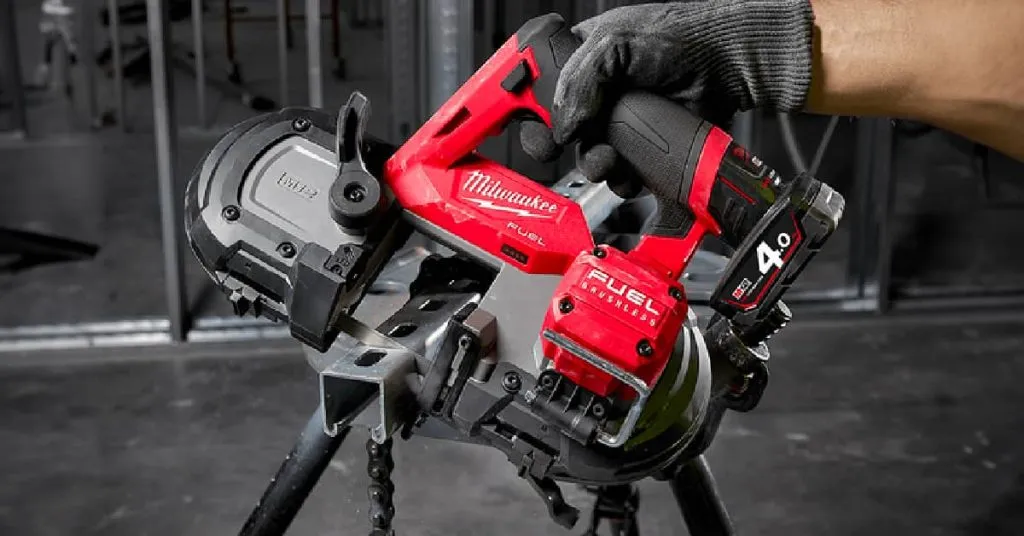Table of Contents
How To Maintain Your Portable Band Saw
Have you ever become frustrated when your portable band saw slowed up from its usual performance right in the middle of an important job? Or even worse, imagine if the motor snarled to a halt, leaving a pile of incomplete cuts. Handy tools tend to act up when they lack the necessary maintenance to keep their performance at the top level.
Statistics show that it is possible to extend the lifespan of a handy tool by over 40% once it undergoes routine maintenance. So, when well-maintained, portable band saws are capable of living up to their reputation for delivering rapid, precise curved cuts through aluminum, plastic, and steel.
And with prices for portable saws ranging between $110 for more basic models and $849 for powerful cordless variants, protecting your investment through proper maintenance makes smart economic sense.
But not to worry – before you pitch that worn-down portable band saw in frustration or call for expensive repairs – use these maintenance tips to keep it running like new!
What are the benefits of Portable Band Saws?
With a portable band saw, you are sure of an accurate curved cut without requiring a large stationary machine. More of their benefits include:
- Convenient handheld size with weights between 10 to 30 pounds for ease of transport and storage
- Cordless battery-powered models allow working anywhere without outlet access
- Create intricate shapes and patterns not possible with circular saws
- Ideal for cutting conduit, pipes, wood, plastic, and metal on sites
- Easy storage in vehicles to transport between multiple work locations
The compact size of a portable band saw offers maneuverability that traditional stationary models lack. The cordless battery-powered portable saws allow working anywhere without requiring an energy source. Even their diminished weight compared to full-size saws enables them to be used for overhead tasks.
What are the Components of a Portable Band Saw?
To keep a portable band saw in good shape, you must be aware of the components. Some of the main components include:
- A portable band saw blade that loops around two rotating wheels
- An adjustable blade guard and guide blocks to steady the blade vertically and horizontally
- A variable speed motor to drive blade movement from 100 to 350 SFM (surface feet per minute)
- A front ergonomic handle with a safety trigger switch and adjustable back handle for secure gripping
- Die-cast aluminum protective housing surrounding internal mechanisms
- Optional steel or aluminum folding base for stability during freehand cuts
All these components require proper routine maintenance to keep them fully adjusted, which maximizes cutting accuracy and operational lifespan.
How Can You Keep A Portable Band Saw in Good Working Order?
Every handy tool needs consistent cleaning and routine maintenance to prevent premature wear on its components. So, a portable hand saw is no exception to this. To maintain your band saw in peak operating condition, follow these tips:
Inspecting and Cleaning Your Saw
Regular inspection paired with cleaning removes hazardous debris accumulation.
Checking and Replacing Blades
- Closely examine blade teeth for chips, cracks, and breaks
- Replace dull or damaged blades immediately for optimal sawing performance
- Upon installing new blades, check that it is properly tensioned and tracked
Inspecting blades before each application prevents gear or motor damage if broken teeth become lodged.
Cleaning Components
- Blow out dust using compressed air after each use
- Wipe away grime on the protective body casing with a soft, dry cloth
- Remove built-up debris near moving components using a nylon brush
- Verify vent holes on the body are clear of obstructions to prevent motor overheating
Cleaning movable parts like the blade guards prevents rust buildup from interfering with smooth adjustments.
Lubricating Components
Applying proper lubrication reduces harmful friction and wear.
Lubricating the Blade
- Apply blade lubricant regularly using graphite sticks on the backside to prevent friction, binding, and overheating.
- Coat blade teeth facing the workpiece with cutting fluid or wax lubricant
Using quality lubricants minimizes cracked blades from heat distortions.
Lubricating Gears, Bearings, and Sliding Pieces
- Lubricate the gear assembly inside the protective housing using gear oil twice yearly.
- Apply lightweight machine oil on shaft bearings when replacing blades
- Keep alignment slide bars slick using silicone spray lubricant before reassembling
Regular lubrication protects internal components against premature failure.
Adjusting Components
Maintain cutting accuracy by periodically adjusting movable parts.
Adjusting Blade Tension and Tracking
- Check new blades have proper 1/4-inch deflection when tensioned
- Carefully adjust blade tracking so it runs perfectly centered on the wheels
- Tighten the tracking knob and tension lever before operating
Insufficient tensioning leads to loose blades and inaccurate curved cuts.
Adjusting Alignment and Guides
- Periodically verify guide rollers sit flush on blade sides without binding
- Loosen lock nuts to adjust guide blocks perfectly parallel to the blade
- Confirm table adjustment knobs easily slide for simple realignment
Keeping guide blocks aligned prevents fraying blade edges against metal.
Maintaining Safety with Your Portable Band Saw
Every handy tool needs consistent cleaning and routine maintenance to prevent premature wear on its components. So, a portable hand saw is no exception to this. To maintain your band saw in peak operating condition, follow these tips:
Using Protective Equipment
Eye and Hand Protection
- Always wear ANSI-approved shatterproof safety glasses to shield your eyes from debris.
- Use well-fitting cut-resistant gloves when handling cutting blades during removal or replacement.
- Wear hearing protection when operating the saw indoors.
Hearing Protection
- Wear earplugs or earmuffs to protect hearing from prolonged high-decibel motor noise.
- Utilize noise-reduction ear protection, particularly in confined indoor spaces.
- Proper protective equipment is crucial when using power-cutting tools.
Keeping Your Work Area Safe
Maintaining a safe working environment minimizes injury risks when operating portable power tools.
- Avoid cutting small materials unable to be securely grasped
- Prevent binding by securing awkwardly shaped workpieces in a vise
- Ensure slip-resistant footwear while working to avoid falls
- Don’t wear dangling clothes, jewelry, or loose hair near spinning blades
- Position flammable liquids safely away from operating power tools
- Staying alert and focused is essential when working with hazardous cutting machinery.
Keep your portable band saw running smoothly and protect your investment by consistently performing maintenance according to the manufacturer’s recommendations.
Portable Band Saw Maintenance Overview
This table provides a concise overview of essential maintenance tasks to optimize the performance and longevity of your portable band saw. From inspecting and cleaning to lubricating and adjusting components, each step is vital for safety and precision cutting.
| Maintenance Task | Description |
|---|---|
| Inspecting and Cleaning | Regularly inspect and clean the saw to remove debris accumulation, ensuring safe operation. |
| Checking and Replacing Blades | Closely examine blade teeth for damage and replace dull or damaged blades promptly. Ensure proper tension and tracking of new blades. |
| Cleaning Components | Use compressed air, soft cloth, and brushes to clean dust and grime from the saw components, preventing rust buildup and motor overheating. |
| Lubricating Components | Apply appropriate lubricants to the blade, gears, bearings, and sliding parts to reduce friction and wear, prolonging component lifespan. |
| Adjusting Components | Periodically adjust blade tension, tracking, alignment, and guide blocks to maintain cutting accuracy and prevent blade-related issues. |
| Maintaining Safety | Utilize proper protective equipment such as safety glasses, gloves, and hearing protection. Maintain a safe work area and adhere to safety precautions to minimize injury risks. |
#1 Portable Band Saw Blade Dealer
For high quality portable band saws blade from leading brands like MK Morse, Bahco, and Qsaw, visit Portaband today. We offer a selection of both corded and cordless portable band saw blades to suit your cutting needs. Our expertise helps you choose the best portable band saws on the market for maximum safety, capability and value for your projects.


